As landrace cannabis genetics become more endangered a Canadian grower gives them sanctuary to bloom
With its fishbone stems, widely spaced bracts and sprawling bud structure Chiang Mai is one of the most unique and rare cannabis strains ever grown in Canada. Space Sherpa, a medicinal grower under the ACMPR program and budding hobbyist breeder, hunted this and several other landrace genetics in the hopes of finding something unique to bring to Canada’s overcrowded legal market. Sherpa laughs that although the odds of him finding a revolutionary plant from landrace stock are low they are—encouragingly—not zero.
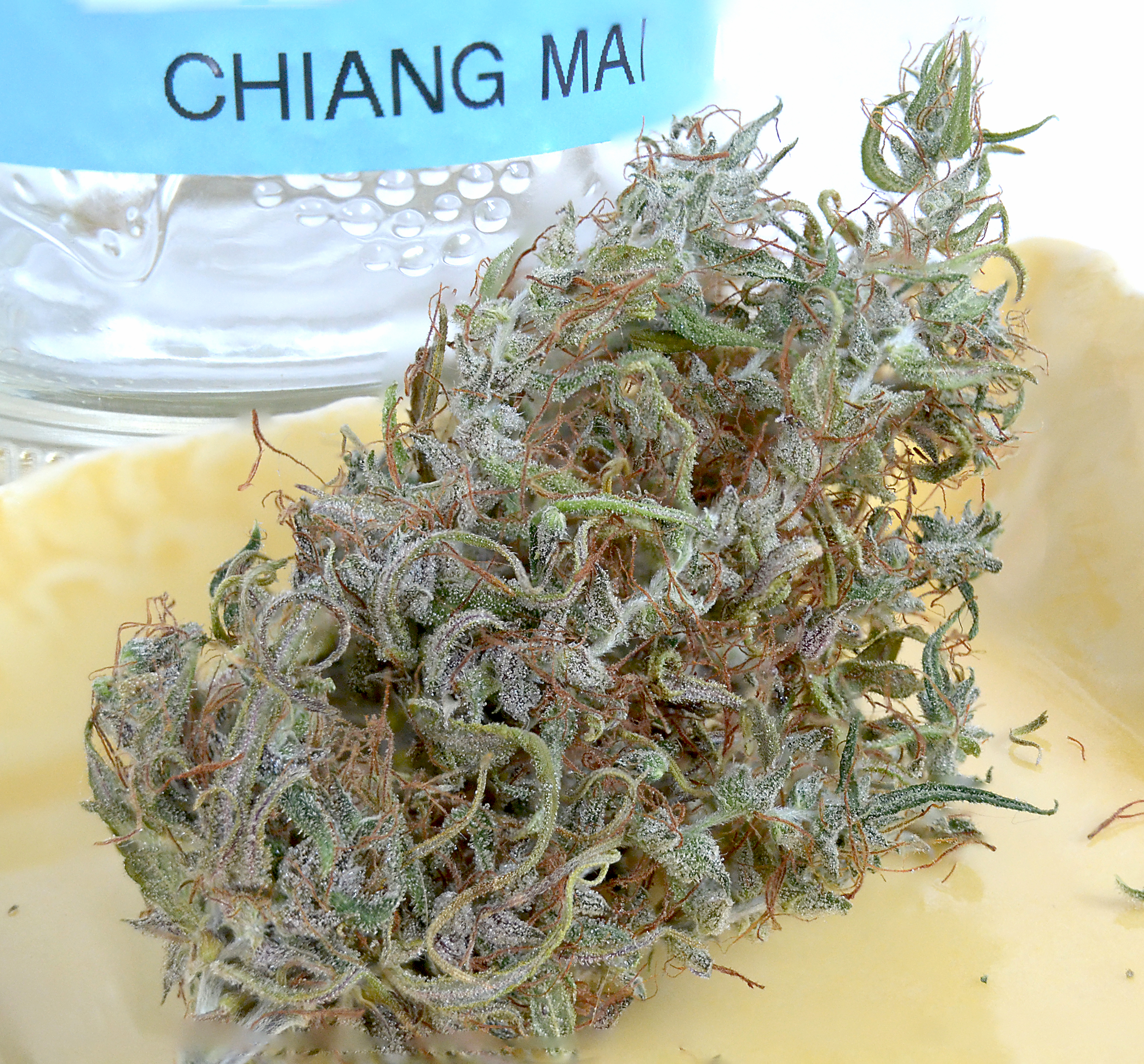
[Chiang Mai flower grown by Space Sherpa]
“If I were out to pay the bills or make money I would have monocrops,” Sherpa said, “which is what everyone does. Frankly, it makes sense but I never wanted to be ‘Steady Eddy’ on the block. Besides, there is something thrilling about hunting new genetics”.
Sherpa cut his teeth as a grower in Humboldt County in 2013, just as the high tide was breaking in California’s recreational market. Two years later, faced with increasingly lower prices in California and in anticipation of Canada’s legalisation, he returned home to Ontario.
“I had envisioned that the quality of one’s flowers would pay dividends,” Sherpa said. “No bites, brother. Nobody wanted to hire legacy guys.
Instead of pitching himself as a grower, Sherpa turned his hand to pheno hunting: the process of selecting best in breed “cuts” out of a larger genotype.
“Think of genotypes or strains as Tom Hanks and his wife,” Sherpa said, “whereas their kids Chet and Colin are phenotypes. Sometimes you get lucky and you get a Colin. More often than not you have a sea of Chets to wade through. Some people hunt for different traits: some for yields, others for potency, and so forth. Simply put, you’re selecting the best from a genetic pool with a specific goal in mind.”
Unique genetics can be extremely valuable in Canada. Rather than provide consumers with more variety though, many licensed producers will purchase and grow clones of the same popular strain to mitigate financial risk.
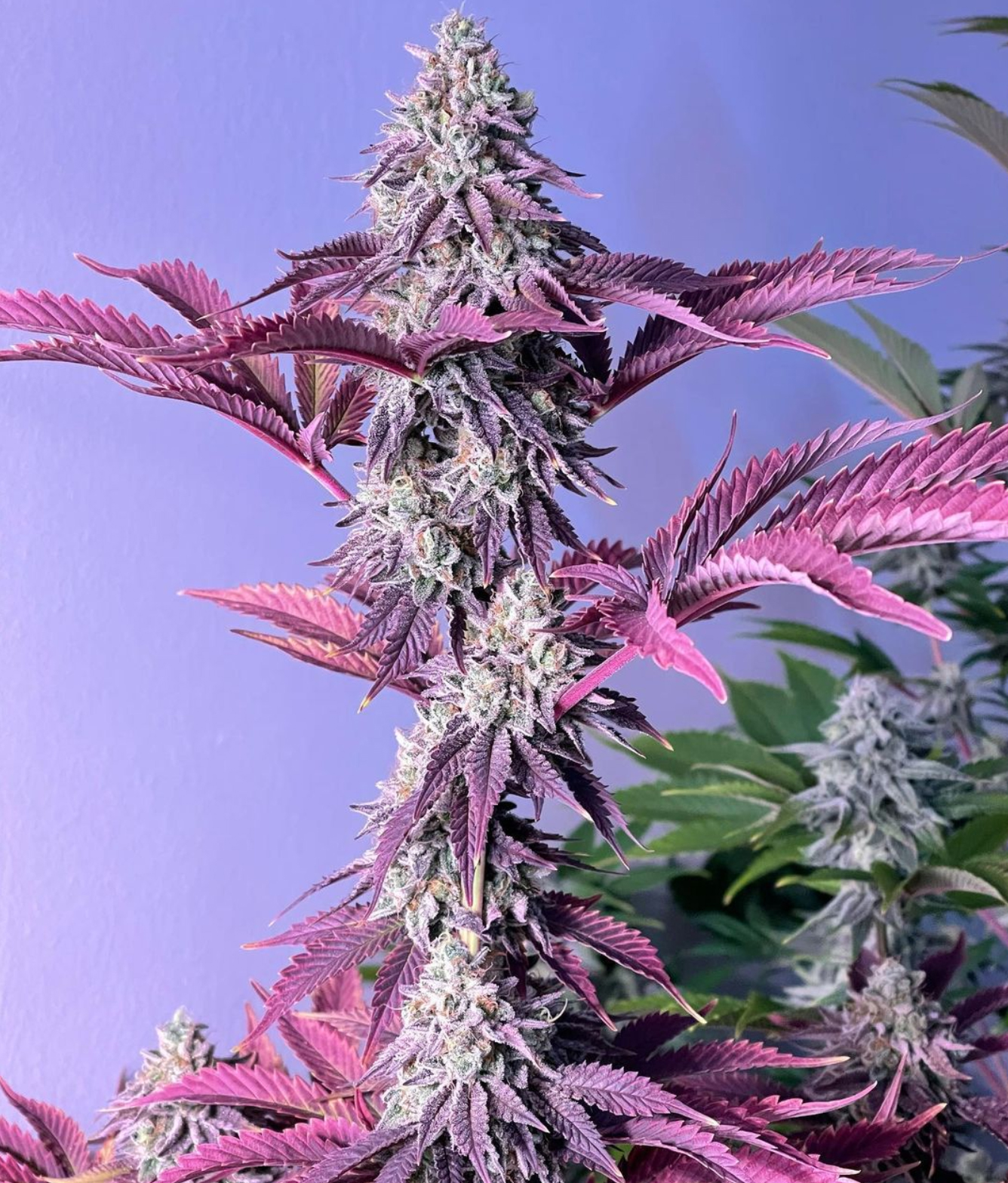
[Lotus grown by Space Sherpa, bred by Mountain Organics. Credit Space Sherpa]
“Then you, as a consumer, get Black Cherry Punch’d,” Sherpa said, referring to a strain grown by several farms in Canada last year. In contrast, Sherpa’s garden is about as diverse as it gets. “Every plant in my flower room right now is a different variety. It’s challenging but it’s also deeply satisfying for me as I get bored easily.”
An endangered species
The aroma of Chiang Mai is cedar, citrus and incense. As you ingest it a warm and deep sense of relaxation and euphoria envelopes you. The effects far outpace those of even the highest THC cultivars in Canada’s legal market and also last much longer.
“I’ve always been a big pothead,” Sherpa said. “I smoked some pot in Thailand and I’ve never been so high. I guess you could say I became a believer in the power of longer-flowering varietals.”
Chiang Mai’s flowers don’t look like the dense, crystal-covered buds consumers have come to know and love. Instead, its bracts dot its stems at intervals with plenty of space between them, similar to the way buds appear on a stalk. This adaptation allows air to flow through the buds more easily, preventing damage and disease from the high humidity characteristic of the Thai mountains where it is found. Most bud rot occurs in large, dense flowers when humidity gets trapped in them but Chiang Mai’s flowers will never have this problem.
Despite its resistance to humidity, incredibly unique aroma, effects and bag appeal, a landrace like Chiang Mai isn’t grown on a commercial scale.
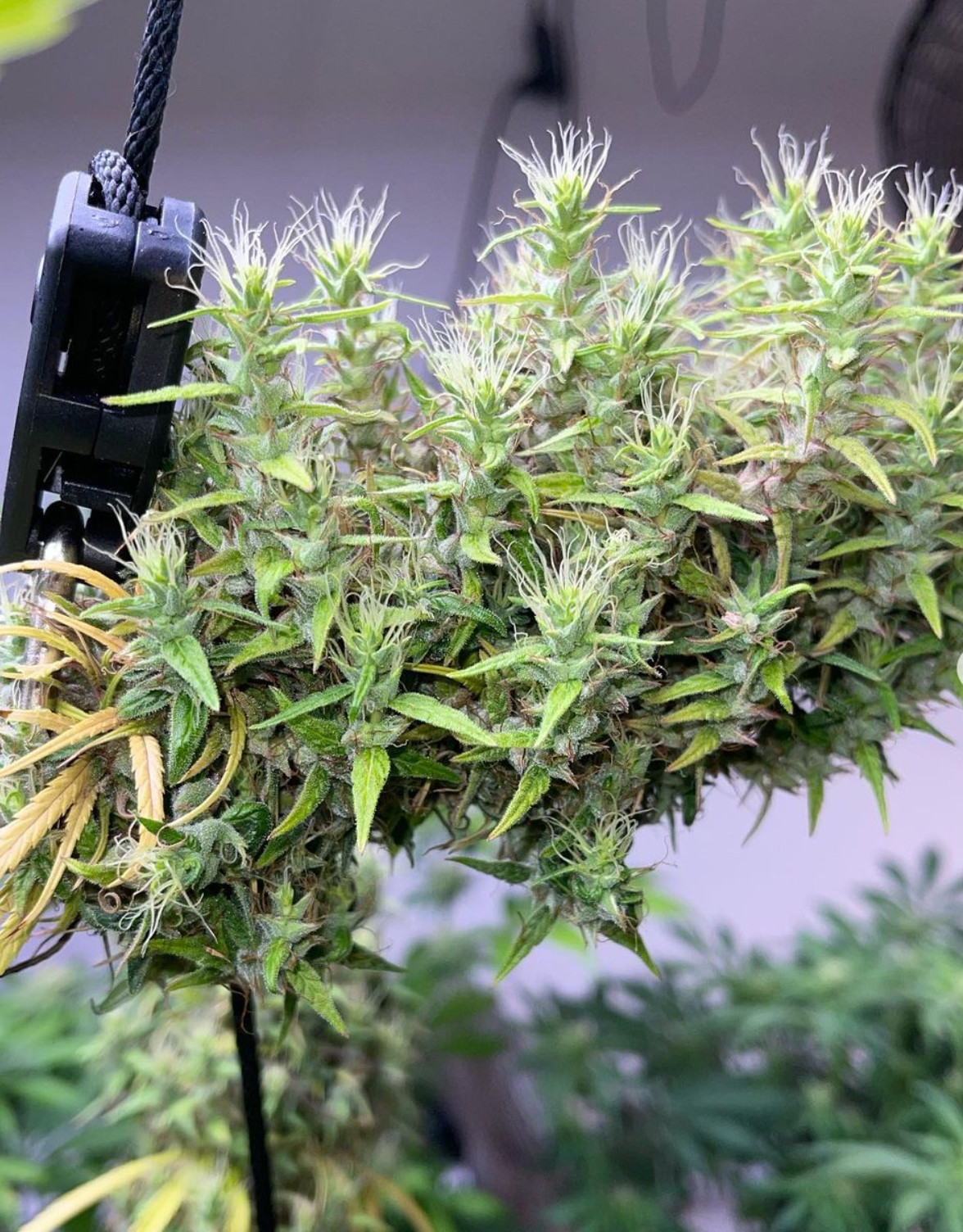
[Chiang Mai flowers need to be supported well during their extended flowering time. Credit Space Sherpa]
“In Canada we can’t grow that kind of weed outdoors,” Sherpa said. “The climate just doesn’t agree. Indoors, you’ve got to be a madman. I started growing Malawi Gold 11 years ago and there’s a huge learning curve. For starters, they grow so tall. They need a ton of control and training. Pretty much every branch needs to be held up to support its own weight.”
Chiang Mai’s flowers can take up to 17 weeks to fully mature, which means an LP growing it would have to wait twice as long as their competitors to sell their product. Those same humidity resistant flowers are also a haven for pests as the spaced out bracts provide lots of nooks and crannies in which to hide. If all that isn’t enough, landrace sativas that come from equatorial regions are more sensitive to nutrients and drastic changes in light.
Today’s dense, crystalline hybrids are the results of decades of selectively breeding landrace genetics to solve many of the growing issues Sherpa faces. The downside is the modern “poly-hybrids”— the hype weed everyone loves — are genetically bottlenecking and becoming increasingly similar.
“If it’s not commercially viable to grow these full term sativas,” Sherpa said, “then I want to create one that is. One that meets even the highest of thresholds in legal.”

[A microscopic view of Chiang Mai’s bracts]
Original, unique strains are becoming much more difficult to find. In many cases, they are being slowly squashed out of existence by prohibition, both in traditional cultivation regions across the globe and here at home where critical access to homegrows in Quebec and Manitoba is still blocked. The community that works to preserve these often unstable genetics are predominantly home growers who shoulder the costs and risks themselves. Sherpa insists it’s the best corner of the cannabis community.
“Nearly every preservationist or landrace person I speak to is passionate about this plant in the same sense that I am,” he said. “Whether they are a dead head grower for forty years or some keen young gun with an obvious love for the plant, I find this particular subset within the community to be the most helpful and supportive when it comes to celebrating and preserving cannabis’ massive gene pool.”
“The argument is pretty sound that some landraces don’t exist in their original form anymore, if at all,” Sherpa said. “Like Durban Poison or the infamous Thai Stick. Sometime many decades ago, the genepool was likely diluted with stray hemp pollen. Over the years the strain, or genotype, changed enough from the original that it lost its famed power. But just like in families you can see spitting images of grandparents appear in grandchildren, so can you see the echo of a powerful genotype in potentially diluted lines. You just have to look a bit longer and harder.”
It took a couple years for Sherpa and a medical cannabis researcher in Thailand to gain each other’s trust but eventually the pair exchanged seeds. Most of the landraces in Northern Thailand are cultivated by an indigenous group known as the Hmong. They were, according to Sherpa, the first people to discover that for cannabis to flower to its full potential it should be without seed (sinsemilla) and in order for that to happen males must be culled or separated. This is great for consumers who want high quality flower but not for preservationists who, in a cruel twist of fate, are after the seeds.
The seeds the Hmong sow, including the Chiang Mai Sherpa grows, are typically higher in THC-V — a rarer cannabinoid that has shown fascinating medicinal promise — than most hybrids available to North American consumers. This fact alone would make Chiang Mai valuable enough to protect from extinction but its continued survival may also breathe new life into cannabis’ shrinking gene pool.
“When you move two genetic forces that have never met before and combine them,” Sherpa said. “You get unusual vigour, wild variation and explosive growth.”
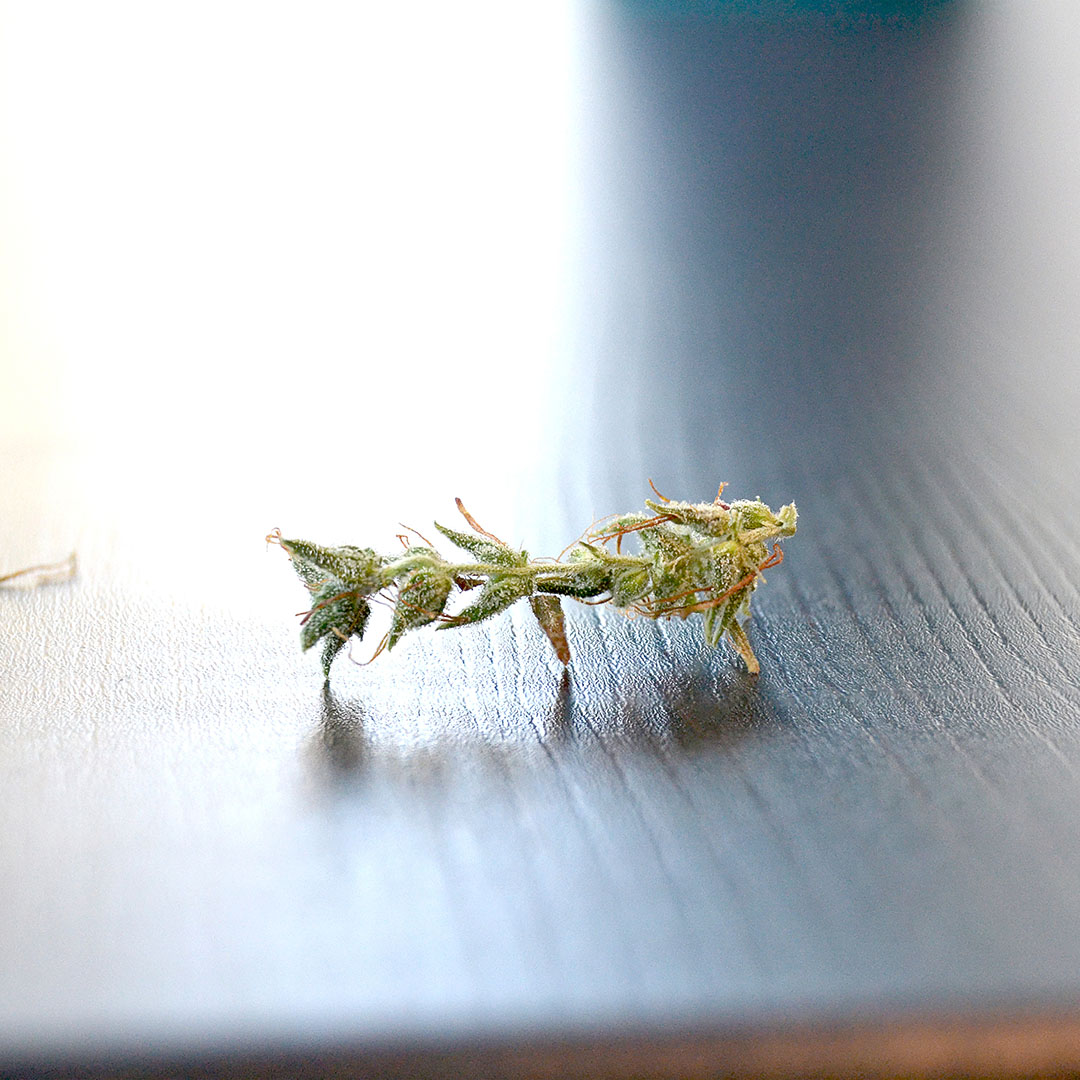
[A stem from a Doi Chaang flower grown by Space Sherpa]
One of the most popular cannabis strains — MAC 1 by Capulator — is the product of a landrace and a hybrid. The story goes that Cap hunted a Columbian landrace and bred that with Alien Cookies. The standout effects and incredible smoothness of MAC 1, combined with its buttery and citrus aroma were the direct result of landrace DNA mixing with today’s gene pool.
“So long as there are conscientious stewards out there and people who are into preservation of these older varietals there’s a lot of strength in a true hybrid,” Sherpa said.
Properly integrating and protecting landraces also prevents entire species’ collapse. Sherpa points out how the Great French Wine Blight of the 1860s only ended after American rootstock was grafted into European vines. Diversity of genetics saved the French wine industry from complete collapse.
The hard work has just begun
It’s not enough to find seeds, grow them out and pick the one with the highest THC concentration. Horror stories abound of six-figure genetics performing poorly or being waylaid by common diseases. One of the hardest things to do when it comes to pheno hunting is ensuring the stability of the genetic. This involves putting any “chosen winners” through the ringer to see how they perform under duress.
“In healthy lines you’ll have intersex ratios of about seven percent,” Sherpa said. “So 7 out of 100 plants in your population are going to be very prone to going intersex on you.”
Colloquially known as “herming”, the hermaphroditic production of seeds during flowering is the plant’s response to a lack of pollen in its environment. It can drastically reduce yields and the potency of otherwise top end strains. In one of Sherpa’s current hunts his intersex ratio is 50%. The path to stability is typically found through inbreeding and back-crossing a strain onto itself. A standout female pheno is often sprayed with colloidal silver, forcing it to become a male. This male can then be used to breed with another clone of the same pheno to produce female seeds.
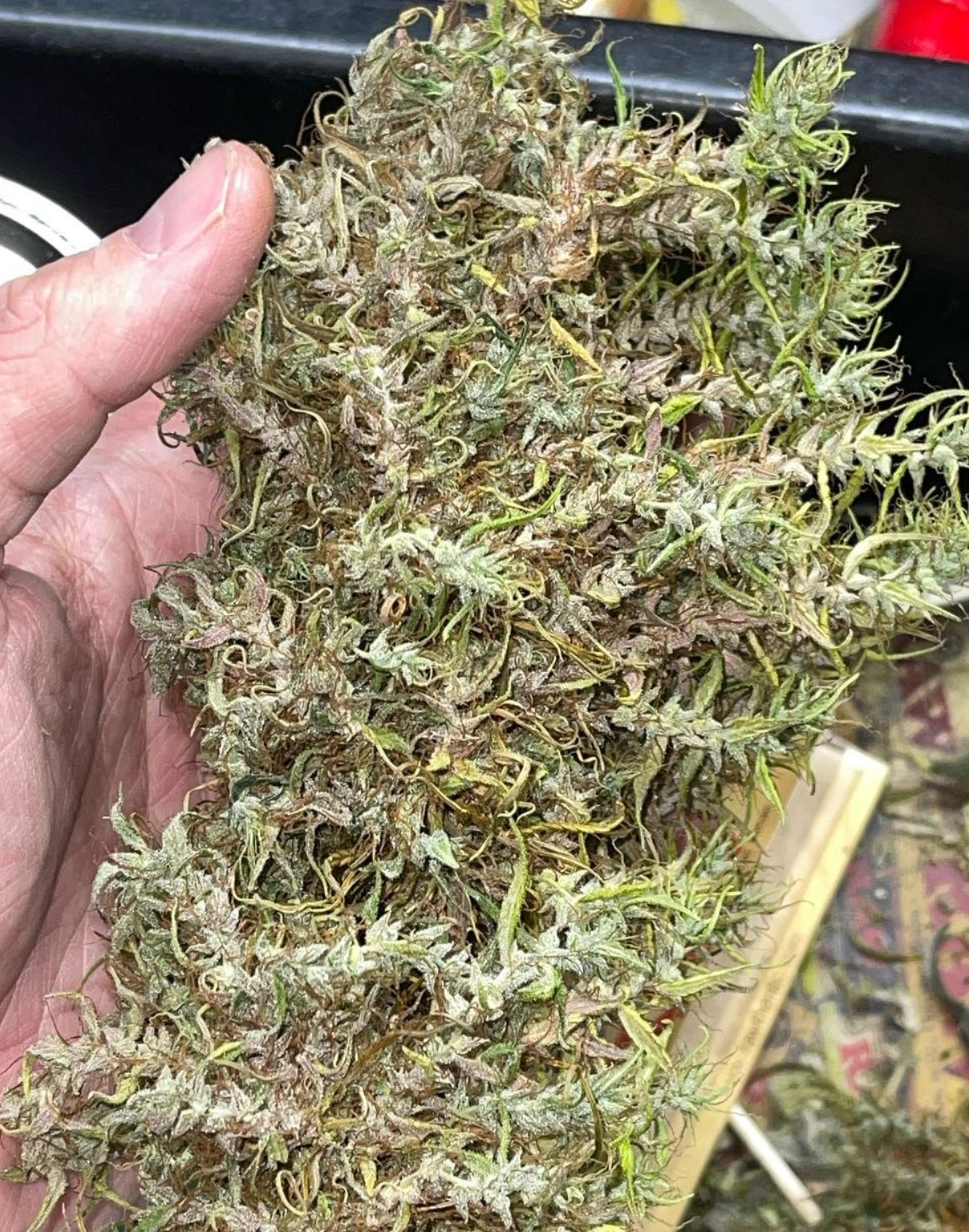
[Chiang Mai grown by Space Sherpa. Credit Space Sherpa]
“The more you inbreed the more intersex traits pop back up again,” Sherpa said.
He gives an example using the Root Beer strain. It had incredibly unique terps but didn’t grow well indoors. To make these unique terpenes available to indoor growers, the breeder crossed it with GMO and found it held onto the Root Beer terps fairly well. It also grew great indoors. They crossed it back again to Root Beer in the hopes of doubling down on the original terpene profile. This led to it being more of an unstable line.
“The GMO Root Beer is a great, great genotype,” Sherpa said. “Well worth the risk of finding a potential male flower or two out of an entire pack of seeds in my opinion. Pheno hunting is a labour of love. So long as you know what you’re looking for and don’t get lazy, you can usually avoid catastrophe.”
The process of properly stabilizing a chosen line is thus an art in which the pheno hunter balances acceptable extremes. When this final task is combined with all the other challenges involved in preserving the diversity of cannabis’ gene pool — obtaining the seeds, growing them out to full maturity, identifying winners — it becomes clear why landrace genetics are becoming extinct and why it’s so important to keep them around.
Without landraces we wouldn’t have the phenomenal hybrids of modern cannabis. Without Sherpa, his partner in Thailand, and others like them these unique strains might disappear completely. Canadian cannabis wouldn’t be the first agricultural sector to get hit with some kind of blight that only diverse genetics could save it from. Besides, what other minor and major cannabinoids are hiding in the mountains of Balochistan or Mexico?
It’s become more acceptable for LPs to headhunt legacy growers as they seek to differentiate themselves to an audience that values authenticity. Sherpa recently began working with High North Labs in Toronto to analyze his genetics library. Although he’s tight-lipped about what might come next he’s confident in the work he’s been putting in. His experiences and efforts in Thailand, California and now back home in Canada have armed him with a seed library and a wealth of plant-based wisdom that are the envy of growers across the continent.
“I like the challenges. I feel like the more different strains I can grow, the better grower I end up being,” Sherpa laughs. “And as the saying goes, ‘There’s no songs about farming, only laments.”

[A microscopic photo of Chiang Mai’s flower]



